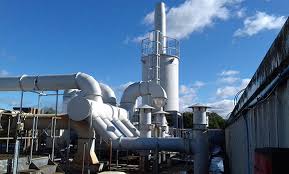EPA Issues Guidance on Odour

The EPA has published the Odour Emissions Guidance Note (Air Guidance Note AG9) for industrial and waste facilities to address issues that arise from unwanted odours in the environment. The guidance note includes methods and principles that can be used by EPA Licensed facilities to assess, control and abate odours arising from an installation.
Odour emissions have the potential to cause disruption, impact communities and lead to irritation, nuisance and complaints, which can be ongoing in some cases. In 2017, 40% of all complaints made to the EPA concerned odour. Thus, odour is a priority for the EPA and they reiterate in the note that all licensees must ensure compliance with their licence regarding odour.
The note describes the human ability to detect odours and the possible mental and/or physical impacts offensive or unwanted odours may have on the individual. The response to an odour can differ depending on the location of exposure, an individual’s past exposure to the odour and coping strategies.
Within licenses for waste or industrial facilities there is usually a condition relating to odour that specifically states that odour should not lead to “significant impairment of, or significant interference with amenities or the environment beyond the site boundary” or that the facility should not “give rise to nuisance at the facility or in the immediate area of the facility”.
The Guidance Note refers to the FIDOL factors which are properties of an odour which can be experienced by a human receptor as follows:
- Frequency of exposure – continuously, intermittently, daily, infrequent, etc.;
- Intensity of odour – faint, strong, etc.;
- Duration of exposure;
- Offensiveness of the odour – very pleasant to very unpleasant;
- Location at which the odour was experienced.
Examples of odorous chemicals that can be used or found in industrial and/or waste facilities are as follows:
- Hydrogen Sulfide/Organic Sulfides;
- Mercaptans;
- Volatile Fatty Acids;
- Aldehydes and Ketones;
- Nitrogenous Compounds;
- Amines.
The types of EPA Licensed facilities that commonly produce odour include:
- Industrial and Waste Facilities that have Onsite Wastewater Treatment Plants;
- Anaerobic Digestion;
- Landfills;
- Waste Transfer Stations;
- Intensive Agriculture;
- Animal By-Products Processing;
- Composting Facilities;
- Food and Drink Industry.
The EPA also highlights that this list is not exhaustive and any facility that uses odorous material has the potential to produce odour.
The Guidance Note mentions BAT Reference Documents that relate to odour for the Chemical Sector, the Food, Drink and Milk Industries, Slaughterhouses and Animal By-Products Industries, Waste Treatment and the Intensive Rearing of Poultry or Pigs.
Odour Audits should be the first step in identifying and reducing/abating odour at a facility. It should be ensured that odours are not detected beyond the site boundary. As well as being useful to detect odours, audits can also be useful in odours being prevented. The guidance note contains an overview of the steps to be taken to ensure a successful odour audit.
The Guidance Note also includes principles and methods for creating Odour Management Plans (OMPs). It highlights that an OMP should be non-complex, structured, systematic and should identify responsibility. There should be ownership of the OMP with the person nominated being responsible for keeping full records of any inspections, checks, surveys, complaints and corrective actions. An OMP should form part of the site’s EMS and should be constantly reviewed and updated as necessary. The planning and timelines of each stage should be outlined in the OMP. The schedule for these stages should be implemented as part of the EMS. The OMP should outline in detail how all odour sources onsite will be managed and controlled on an ongoing basis. This should also include the identification of any possible incidents and reasonably foreseeable accidents. A plan on how to deal with these incidents should also be included. The Guidance Note for Odour Impact Assessment (AG5)includes additional information on how to prepare an assessment for odour, including a template for an odour investigation and an odour log.
The EPA suggests that licensees consult with the EPA before completing an odour abatement study and test programme.
To read the guidance note in full click here.
Environet can assist with odour issues should your company require it. For any assistance, or to get more information, please contact us.
December 2019
